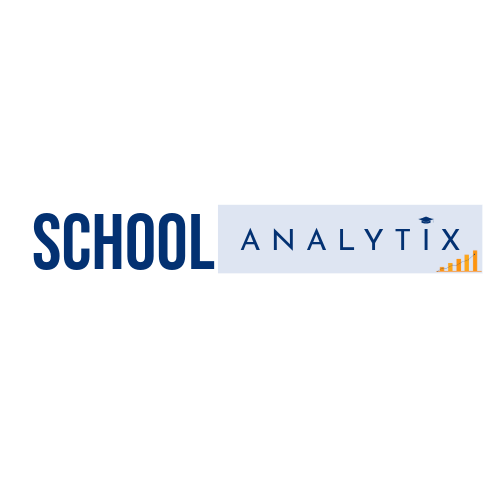Every student deserves the opportunity to thrive academically, yet many face barriers that hinder their educational journey. Identifying at-risk students—those who may be struggling academically, socially, or emotionally—early on is crucial for providing timely interventions and support. Data analytics offers a powerful tool for educators to detect patterns, predict outcomes, and intervene proactively to ensure every student’s success. In this article, we explore how data analytics can be leveraged to identify at-risk students and pave the way for tailored interventions and support.
Understanding At-Risk Students
At-risk students encompass a diverse range of individuals who may face various challenges impacting their academic performance and well-being:
Academic Challenges: Students experiencing academic difficulties such as low grades, absenteeism, or disengagement in coursework may be at risk of falling behind or dropping out.
Socioeconomic Factors: Economic instability, limited access to resources, and socioeconomic disparities can affect students’ ability to succeed in school.
Social and Emotional Well-being: Factors such as bullying, social isolation, mental health issues, and trauma can impact students’ emotional well-being and hinder their academic progress.
English Language Learners (ELL): ELL students may face linguistic and cultural barriers that impede their academic achievement and social integration.
Identifying at-risk students requires a holistic understanding of their individual circumstances, strengths, and challenges.
Leveraging Data Analytics for Identification
Data analytics offers a systematic approach to identifying at-risk students by analyzing patterns and trends in various data sources:
Academic Performance Data: Analyzing academic performance metrics such as grades, test scores, attendance records, and course completion rates can help identify students who are struggling academically.
Behavioral Data: Monitoring behavioral indicators such as disciplinary incidents, tardiness, and truancy can flag students who may be experiencing social or emotional challenges.
Demographic Information: Examining demographic factors such as socioeconomic status, ethnicity, language proficiency, and special education status can provide insights into students’ backgrounds and potential risk factors.
Engagement Metrics: Tracking student engagement with learning resources, participation in extracurricular activities, and interactions with peers and teachers can reveal patterns of engagement and disengagement.
Social and Emotional Screening Tools: Administering social and emotional screening tools, surveys, or assessments can assess students’ emotional well-being and identify those in need of additional support.
Predictive Analytics Models
Predictive analytics models leverage historical data to forecast future outcomes and identify students who may be at risk:
Early Warning Systems: Early warning systems use predictive models to identify students who are at risk of academic failure or dropout based on early indicators such as attendance, grades, behavior, and course performance.
Machine Learning Algorithms: Machine learning algorithms such as decision trees, logistic regression, and neural networks can analyze multiple variables to predict student outcomes and flag at-risk individuals.
Student Risk Scores: Assigning risk scores to individual students based on predictive models allows educators to prioritize interventions and allocate resources effectively.
Cluster Analysis: Cluster analysis techniques group students with similar characteristics or risk profiles, enabling educators to target interventions to specific subgroups of at-risk students.
Implementing Interventions and Support
Once at-risk students have been identified, educators can implement targeted interventions and support strategies to address their unique needs:
Academic Support: Providing additional academic support through tutoring, remedial classes, or personalized learning opportunities can help at-risk students improve their academic performance and catch up with their peers.
Social and Emotional Support: Offering counseling, mentoring, and social-emotional learning programs can support at-risk students’ mental health and well-being and foster a positive school climate.
Family and Community Engagement: Collaborating with families, community organizations, and social services agencies can create a supportive network around at-risk students and address underlying family or community challenges.
Data-Informed Decision-Making: Continuously monitoring student progress and adjusting interventions based on ongoing data analysis ensures that support strategies remain effective and responsive to students’ evolving needs.
Empowering Student Voice: Encouraging at-risk students to voice their concerns, goals, and aspirations empowers them to take ownership of their education and advocate for their needs.
Ethical Considerations and Challenges
While data analytics offers valuable insights into identifying at-risk students, several ethical considerations and challenges must be addressed:
Privacy and Confidentiality: Safeguarding student privacy and confidentiality is paramount when collecting, storing, and analyzing sensitive educational data.
Bias and Equity: Ensuring that predictive models are fair, transparent, and equitable requires mitigating biases and considering the diverse needs and experiences of all students.
Interpretability and Accountability: Providing educators with the necessary training and support to interpret data analytics findings accurately and use them responsibly in decision-making processes.
Data Governance and Security: Establishing robust data governance policies and security measures to protect student data from unauthorized access, misuse, or breaches.
Cultural Competence: Recognizing the cultural, linguistic, and socioeconomic diversity of students and tailoring interventions to meet their individual and collective needs.
Conclusion
Identifying at-risk students using data analytics is a critical step towards fostering inclusive, supportive, and equitable learning environments. By leveraging data-driven approaches, educators can proactively identify students who may be struggling academically, socially, or emotionally and implement targeted interventions to support their success. However, addressing ethical considerations, ensuring data security and privacy, and promoting equity and inclusion are essential for responsible and effective use of data analytics in education. As educators continue to harness the power of data, they can empower at-risk students to overcome challenges, realize their potential, and thrive academically and beyond.
In this article, we’ve explored how data analytics can be used to identify at-risk students and implement targeted interventions to support their success. By leveraging academic, behavioral, demographic, and engagement data, educators can gain insights into students’ unique needs and challenges and tailor interventions to address them effectively. As the field of data analytics in education continues to evolve, responsible and ethical use of data will be essential for ensuring that every student has the opportunity to succeed and reach their full potential.

